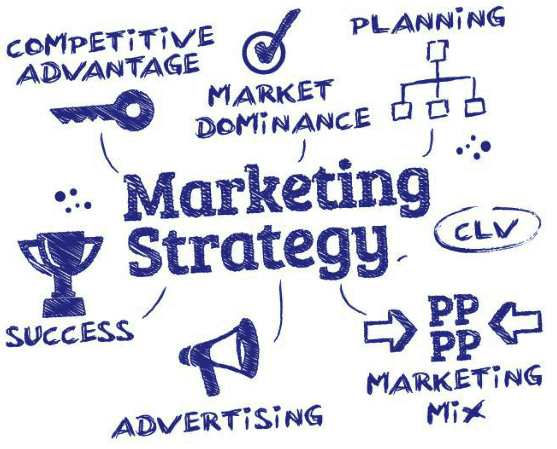Marketing: Just As Important In The Construction Industry

A Conversation with Alex Smoot (Pile Buck) and Brian Fraley (Fraley AEC Solutions)
INTRODUCTION
Brian and I have gotten to know each other over the years. As the managing editor of Pile Buck I’ve worked with him and his architectural, engineering, construction (AEC) focused marketing communications firm on multiple occasions.
We’re often scratching our heads, discussing the lack of marketing emphasis in the construction and engineering industries. We can’t help but wonder: Why do so many construction and engineering firms continue to not market their product?
As we witness the changing of the generational guard, it’s perplexing that the industry continues to cling to an outdated mindset.
We’ve all been subject to heavy marketing of consumer products like iPhones, prescription medications, cars, and lawyers.
Why is this industry on the other end of the spectrum when it comes to marketing?
Whatever the reason, we decided to sit down and discuss some key marketing techniques, what they mean, and how they can help our industry.
MARKETING IS FOR ALL FIRM SIZES
Brian: When you look at the construction industry, generally speaking, you will find that the larger firms are more likely to have a marketing strategy. They may be advertising, using social media, and investing in a website. Some even have in-house marketing staff.
My observation has been that there is a correlation between a firm’s resources and its commitment to marketing.
When a business achieves a certain amount of growth, the principals start to feel a need to invest in marketing.
The truth is: firms of all sizes should be marketing.
Marketing is about growing business. I would argue that smaller businesses should be marketing more aggressively because they need to be on a growth path.
Larger firms are often trying to maintain and grow what they have already built.
Our discussion will show you some key marketing tactics that construction and engineering firms can use to lay a solid marketing foundation.
Alex: I couldn’t agree more. Why should the size of the firm determine a commitment to marketing?
I see this all the time, and it is not a pretty picture — a small pile driving contractor does great work in the New England area but the company website is outdated with almost no content. No photos from previous jobs, not to mention testimonials. And no logo!
Take a look at Bellingham Marine, one of our PB advertisers.
They’ve got the basics down:
– A simple, yet a memorable logo.
– A clean website that informs the visitor of everything they need to know.
– A regular print ad in the magazine with a clear call-to-action.
– They also release occasional press releases about their recent projects, which I can’t help but read whenever I receive one in my inbox.
As a result, I notice their projects around California. I don’t think this is a coincidence.
 BRANDING
BRANDING
Brian: What do you want your customers to think when they hear your name?
That is your brand.
Creating your brand is the true foundation of your marketing efforts. Creating your brand has many dimensions. It defines how your customers experience your firm.
Your brand separates you from other companies offering the same services. It gives you a competitive advantage.
Consistency is key: your logo, slogan, color scheme and type of print font form the public face of your company. All that your customers sees, reads and hears should tell the same story to your target market.
Alex: Let’s take a look at another PB client, Equipment Corporation of America (ECA). I’ll never forget seeing their ad in an association magazine years ago.
Before I even read the text, their brand was… well, branded on the forefront of mind.
They had this double-page spread with a vintage background that was powerful.
The words “BUILDING A POSITIVE FUTURE TOGETHER” was accompanied by a line drawing of multiple rigs.
A reader browsing through the magazine couldn’t help but stop and read their company information which appeared in the second half of the ad.
To this day, when a client is looking for help, I still reference that ad.
SOCIAL MEDIA MARKETING
Brian: If someone had told you 30 years ago that you would be able to influence thousands on a free platform, would you have believed it?
And yet that is exactly what social media has allowed.
The construction and engineering industry is fairly well represented, yet too many profiles are as inactive as a job site where fossils have been uncovered.
Being successful on social media requires time, patience, focus on your niche, creativity, and willingness to learn best practices.
Do your homework on the nuances of each platform or run the risk of damaging your brand. And don’t dilute your potency by trying to be everywhere.
Avoid Shiny Object Syndrome and focus on the handful of platforms where your target audience participates. Most importantly, avoid broadcasting, focus on engagement, and measure your results.
Alex: I have to admit, since the beginning, I tried to avoid social media and may still be reluctant to indulge in its various forms. But it works.
When you buff away the dirt — SPAM posts in a foreign language, shameless promotion of products, bickering of irrelevant matters — a valuable communication tool takes shape.
Whether it’s Facebook, Twitter, or LinkedIn, there are audiences who want to know about your latest marine project, latest hammer, or new promotion within the company.
I want to reiterate what Brian said: Be careful about spreading everywhere. Quality before quantity. Be sure your company website, Facebook and Twitter pages are stable before exploring more outlets.
Brian: The power of email marketing is your ability to fully-own the content, distribution and mailing list.
You don’t have that luxury on social media.
So what qualifies as good content? You might consider a monthly eNewsletter, company news, a recent project, a blog, or perhaps tasteful promotion of a product or service.Limit your distribution to no more than twice monthly and avoid blatant promotion, or your subscribers will quickly unsubscribe.
Alex: Email marketing can be extremely effective, but approach with caution.
Out of all marketing methods, I can’t stress enough the importance of doing your homework on this one. As Brian mentioned, limit your distribution frequency. Email marketing platforms are stricter than ever — too many complaints and your account will most likely be shutdown, not to mention damaging your reputation with clients.
Use this tool wisely. Remember, if one tool could do all, there would be no need for a toolbox.
CONTENT MARKETING
Brian: There is a pendulum shift underway and it’s been formally labeled content marketing.
We are moving from an interruption based promotional approach to generating business by being helpful.
It’s important to note that this is a mindset that should flavor many of the marketing tactics discussed above. In a market crowded with options, it’s easy to see how customers started to demand more than just a product or service.
Educate your clients on how they can get the most out of your product or service and you will be well served.
Alex: As a magazine editor, I’m obviously a strong proponent of content marketing.
Despite its effectiveness, it’s another marketing tool that is usually ignored. Too often I see a contracting company miss out on an opportunity to showcase their project to the world, even when they express a strong desire to do so.
It’s the same with products. Most product developers have a great new product and they think a photo on their website will suffice. They show no interest in contributing a press release.
Why? I believe in a lot of cases, most firms don’t want to put in the time, even when it’s free.
They lose interest. Stop calling. The emails are forwarded around the office(s) until it fades into the abyss.
Why is marketing important in the construction and engineering industries?
Marketing is crucial for all firm sizes to grow business, create a brand, and gain a competitive advantage, with a focus on consistency, engagement, and a solid marketing foundation.
What are key marketing tactics for construction and engineering firms?
Key marketing tactics include establishing a brand with a memorable logo, utilizing social media platforms wisely, engaging in email marketing with informative content, and adopting a content marketing mindset to educate clients and showcase products and projects effectively.


















